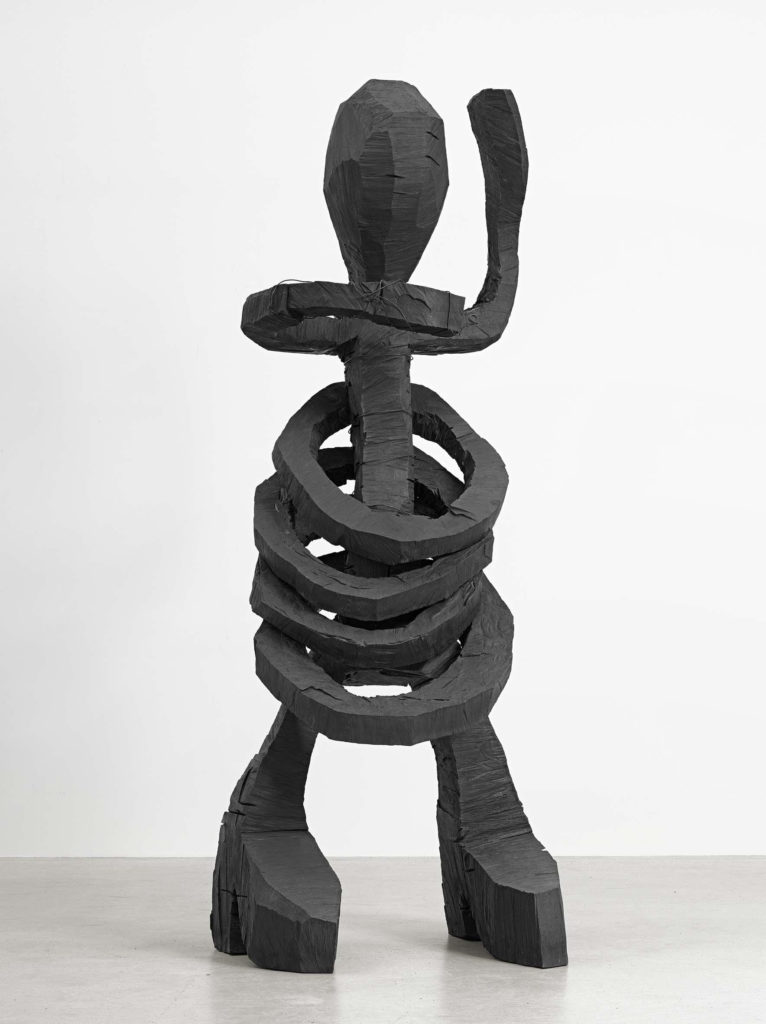
Galerie Thaddaeus Ropac presents, in the Paris Pantin exhibition space inaugurated in October 2012, a comprehensive exhibition with new monumental sculptures and paintings by the German artist Georg Baselitz.
“What is Germany, really, in regard to traditional sculpture?” In a recent interview, Baselitz looked back to questions he asked himself in the 1970s: “The last thing I could think of in the way of pleasing or characteristic German sculpture after the Gothic period was the group Die Brücke, including Schmidt- Rottluff, Kirchner and Lehmbruck. When I finally arrived at this idea, I took a piece of wood and started work” (Georg Baselitz, 2011).
Baselitz’s first sculpture was shown in the German Pavilion at the 1980 Venice Biennale. Since then he has made only a few.
After Edgar Degas and Paul Gauguin, artists such as Umberto Boccioni, Pablo Picasso, Henri Matisse and Max Ernst chose a readily malleable material when they had reached the limits of painting. Baselitz stands in this tradition of painters who leave their medium. He finds sculpture “a shorter way than painting”, to tackle certain problems; it is “more primitive, brutal, not as reserved […] as painting can sometimes be”, and “less cryptic than pictures, far more direct, more legible” (Georg Baselitz, 1983). Besides this recourse to Expressionist sculpture, an important field of reference for Baselitz’s sculpture is the fundamental nature of African sculpture, where specific basic types have been developed over a long period.
